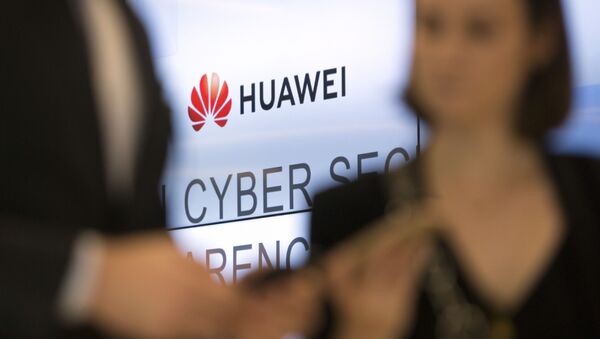Semiconductor manufacturing international corporation (SMIC) is a leading Chinese chip manufacturer that recently raised a record $7.8 billion worth of investment in production development.
But SMIC products are still lagging behind today’s most advanced chips in terms of manufacturability: SMIC produces 14nm chips, while leading manufacturers TSMC and Samsung produce smaller 5nm chips.
That said, even at 14nm, many Chinese electronics manufacturers use SMIC products. And this number looks set to rise due to US sanctions on Huawei, leading the company to buy a significant proportion of its chips from SMIC, up to 20 percent of the company’s orders, according to the chip maker.
The problem is that even in the 14nm manufacturing process, SMIC, as well as other chip manufacturers throughout the world, depends on American technology. For example, all the software needed to design chips is American: Cadence Design Systems, Synopsys, Ansys. The companies supplying the equipment necessary for chip production are also American: Applied Materials, KLA, ASML.
This makes SMIC sensitive to the secondary US sanctions imposed on Huawei, banning US companies from supplying chips to the Chinese telecom company if their production uses any American technology. Moreover, the US authorities have recently announced the possibility of blacklisting SMIC and imposing similar sanctions against it, motivated by the fact that SMIC allegedly cooperates with the Chinese military-industrial complex. This is damaging for SMIC's share price, and as reports of possible sanctions became public, the company’s capitalization fell by around 20 percent.
Given all of this, Chinese chip manufacturers are trying to reduce their dependence on imports. Chinese authorities have repeatedly spoken about the need to develop their own fundamental technologies and China has set a target to meet 70 percent of its needs for chips and semiconductors by 2025, and to achieve complete import substitution by 2030. To do this, the so-called “Big Fund” (China integrated circuit industry investment fund) was created in 2014, and has already built up a war chest of more than $30 billion. This is being used to finance the development of local equipment manufacturers: Naura, Advanced Micro-Fabrication Equipment, Hwatsing, ACM Research, Mattson Technology and Shanghai Micro Electronics Equipment. The latter, according to the Chinese media, promises to have installed its own equipment to produce 28nm chips by 2022.
Xu Canhao, professor at School of Computer Science and Technology at Suzhou University, considers this goal too ambitious, saying that it’s almost impossible to establish a domestic production base in just a few years.
“If we are talking about a 40nm manufacturing process, or even older technologies, of course, Chinese companies can do that. But if we are talking about a 5nm manufacturing process, it’s almost impossible to cease dependence on American technologies. China has always lagged behind in the field of semiconductors. After all, it is a process that involves a lot of production chain links.”
So far, to produce chips of at least 28nm, SMIC is able to provide itself with only 20 percent of the necessary equipment and technologies, while the rest has to be imported, if not from the USA, then from Japan, South Korea or the EU. But even non-US equipment still uses US technologies in some way. Therefore, China needs to develop its own industrial base from scratch. But this is a long process, the expert pointed out.
“For example, Dutch ASML produces photolithographic systems. But the laser radiation source these systems use is American. This is a very long production chain, and there is no company that can manufacture world-class products alone. The main problem for us is that we don’t have advanced semiconductor technologies. We’ve created a special fund to stimulate the semiconductor industry. Companies involved in this area are subject to tax breaks. But we need many years to reach the breakthrough international level. It took the US, the EU and Japan 40-50 years to develop these technologies. We simply won’t be able to reach such a high level in two or three years.”
Even those Chinese manufacturers that produce innovative products on a global scale still depend on foreign components. Back in spring, Yangtze Memory Technologies created a prototype of a 128-layer 3D NAND flash memory chip, which is not yet mass-produced by any company in the world. However, the company depends on foreign supplies, and, fearing a further deterioration in relations with the United States, it, like Huawei, started stockpiling components so that they would last for at least a year.
Chinese high-tech manufacturers are now trying to solve pressing problems by diversifying their suppliers. However, assuming that the technological and ideological confrontation with the United States is serious and long-lasting, China needs to think of how to ensure its independence and economic and technological security in the future.
China is sparing no expense in technology development, planning to allocate $1.4 trillion to it by 2025. A few decades ago, China produced only cheap consumer goods, but today it has switched to producing cars, telecommunications equipment and computers, which already are a real competition for Japanese, European and American products. It is hard to estimate how long it will take China to develop its own competencies in semiconductors. The Chinese authorities have exempted companies engaged in the semiconductor industry from income tax for 10 years. And it may well be the case that this is how long it could take them to become competitive players in the world market.



